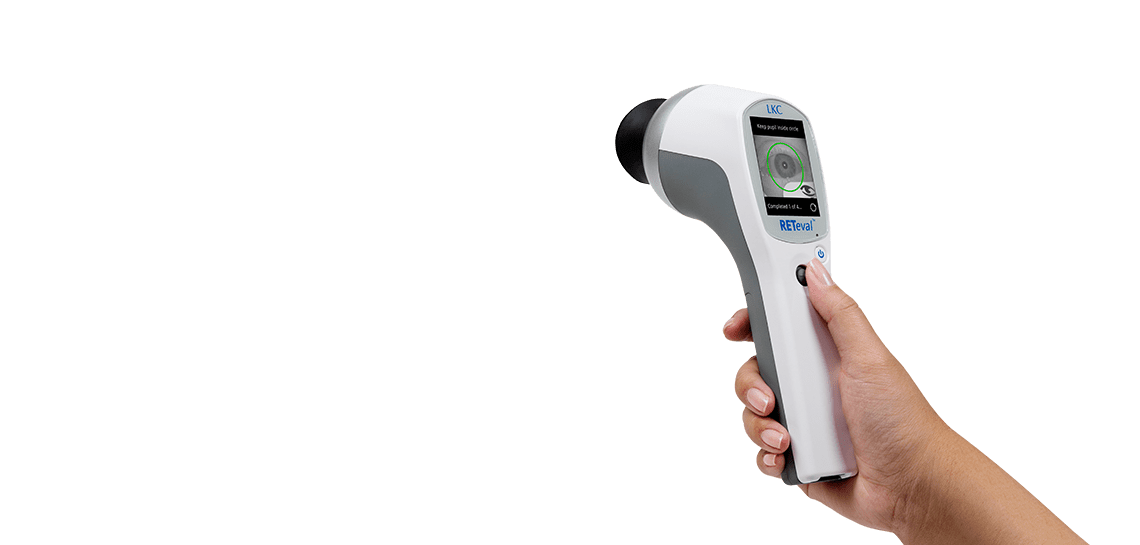
A Superior Assessment for
Diabetic Retinopathy Progression Risk
Introducing the first objective tool to measure diabetic retinopathy progression risk like no other. The rapid and non-invasive RETeval® device combines retina cell stress with pupil light response. This powerful combination provides a superior progression risk assessment.
RETeval: A Powerful Aid to Diagnose and Track DR
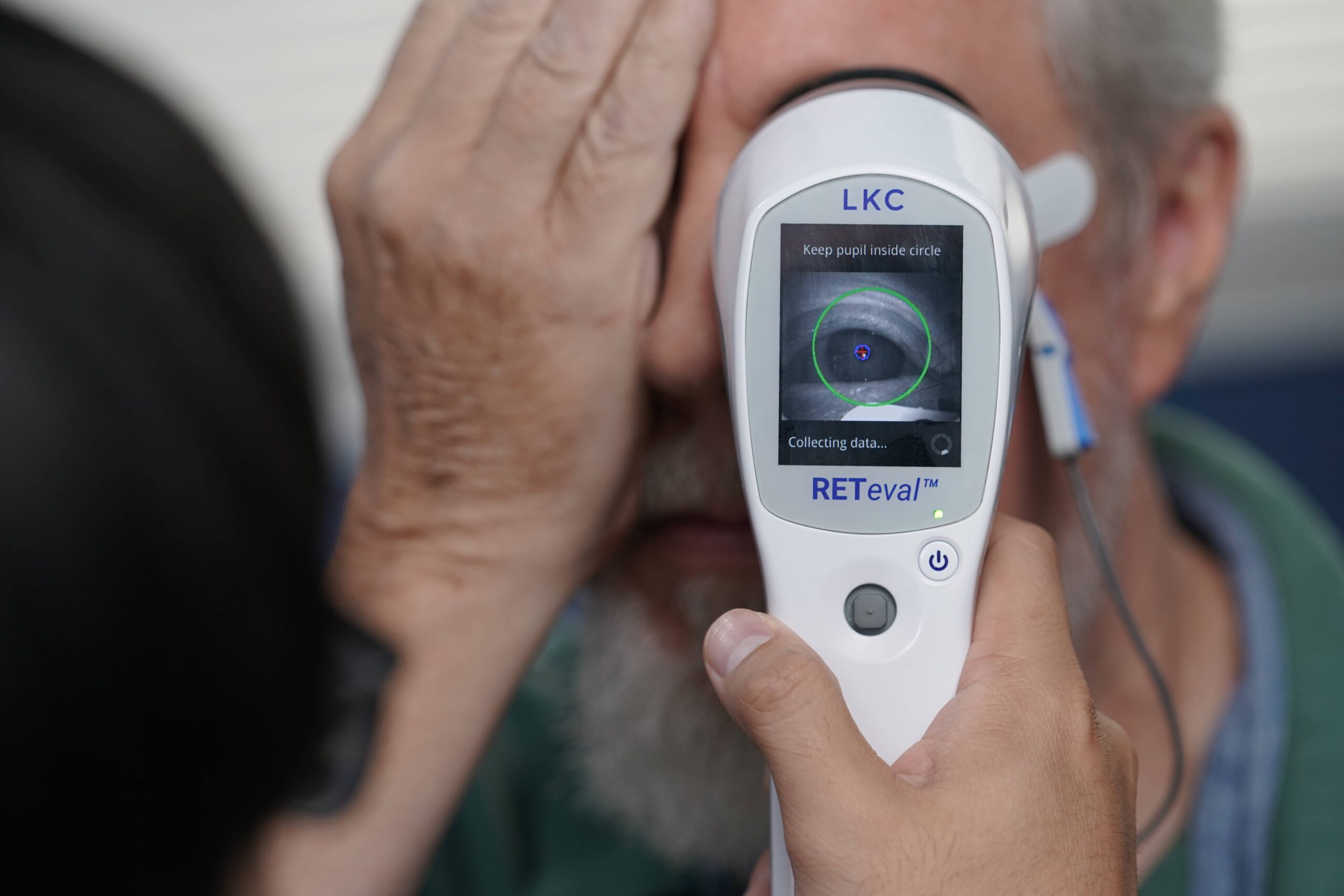
- Measure all your diabetic retinopathy patients with the DR Assessment protocol every visit to determine their risk of progression.
- Superior predictive power compared to the current standard of care (ETDRS stereo photography).
- Test in 2.3 minutes.[14]
- Approved CPT code 92273 in the US.
“The DR Assessment protocol provides a superior risk assessment for progression. A score of 23.5 or higher indicates an 11-fold risk of requiring intervention within 3 years.”[14]

Comparative Ocular Intervention Rates Based on Testing Method
Testing method |
Incidence rate |
||
|---|---|---|---|
| Year 1 | Year 2 | Year 3 | |
| Structural Testing Alone (VTDR+) | 19% | 31% | 53% |
| Functional Test Alone: RETeval DR Score > 23.4 | 23% | 41% | 65% |
| Functional & Structural: VTDR+ and RETeval DR Score > 23.4 | 34% | 54% | 74% |
| Functional & Structural: VTDR+ and RETeval DR Score ≤ 23.4 | 3% | 4% | 29% |
Note: VTDR+: Vision Threatening Diabetic Retinopathy defined as clinically significant macular edema and ETDRS-DR severity ≥ level 53, severe NPDR or PDR.
Source: Enhancing Risk Assessment in Patients with Diabetic Retinopathy by Combining Measures of Retinal Function and Structure. Translational Vision Science & Technology. August 2020, Vol.9, 40. doi:https://doi.org/10.1167/tvst.9.9.40
Conclusion: Know to whom you should provide intervention and when. The RETeval device provides a superior progression risk assessment. Combining structural and functional information provides even better results.
Why RETeval?
Functional stress generally precedes structural damage
Disease onset >
|
Functional stress >ERG technology |
Structural damage >Structural imaging |
Vision loss
|
|---|
DR Videos

“When do I refer out?”
Best management practices for diabetic retinopathy

Detecting retinal damage before it occurs

Using ERG with the RETeval to track NPDR progressing to PDR
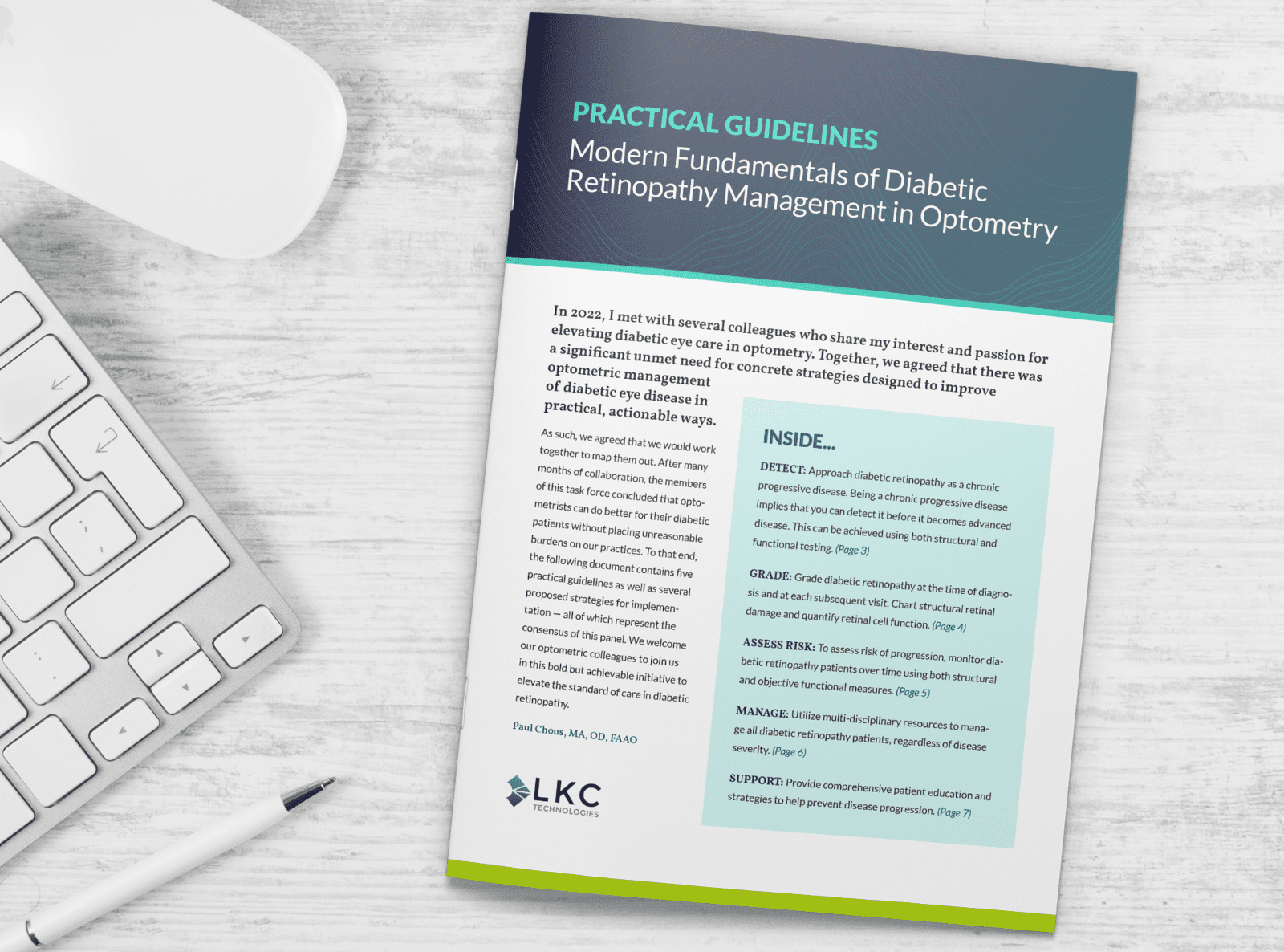
Modern Fundamentals of Diabetic Retinopathy Management in Optometry
A team of 14 optometrists set out to simplify and standardize diabetic retinopathy assessment and management by developing a set of practical guidelines for their peers. Their collaboration presents a framework to improve the diagnosis and management of DR to support improved patient outcomes and allow primary eye care providers to confidently care for the growing population of patients with diabetes.
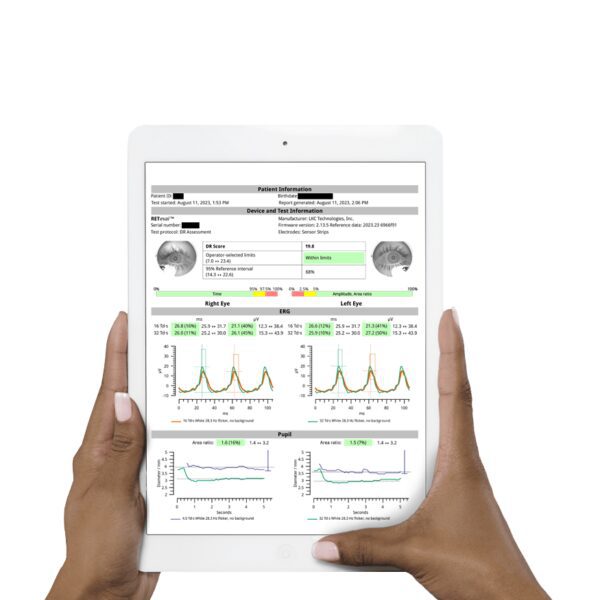
SIMPLE TO INTERPRET
RETeval Reports
Color-coded results compared to an age-adjusted reference data set make interpretation straightforward and efficient in a busy practice. Results are easily exported into any EMR/EHR system.
DR Assessment protocol report includes:
- Age-adjusted reference data for ease of interpretation
- Final DR Score
- Bi-polar functional stress compared to reference
- Pupil response compared to reference
SAMPLE REPORT
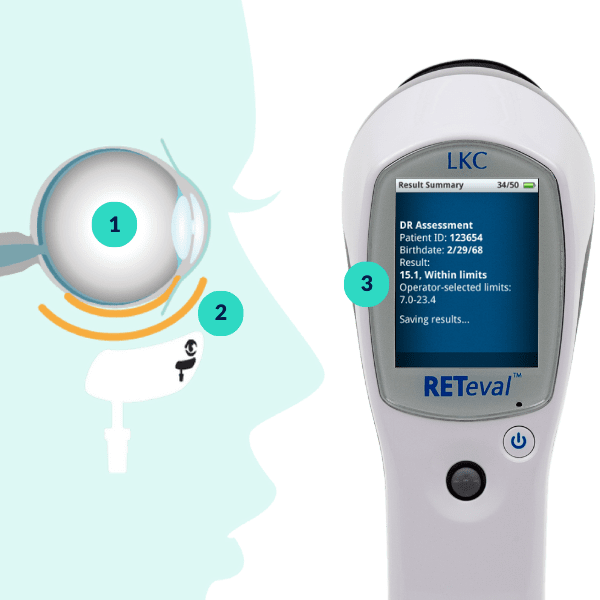
How It Works
-
The RETeval device starts flashing light into the patient’s eye.
-
The retina responds to the flashes by generating small electrical signals that travel through the facial structure to the Sensor Strip.
-
The Sensor Strip detects the electrical signals and compares the results to the age-adjusted reference database.



